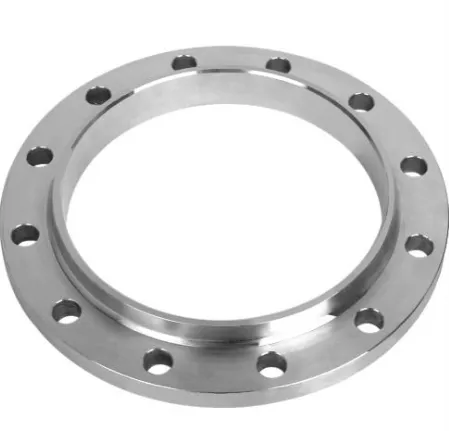-
Cangzhou Yulong Steel Co., Ltd.
-
Phone:
+86 13303177267 -
Email:
admin@ylsteelfittings.com
- English
- Arabic
- Italian
- Spanish
- Portuguese
- German
- kazakh
- Persian
- Greek
- French
- Russian
- Polish
- Thai
- Indonesian
- Vietnamese
- Zulu
- Korean
- Uzbek
- Hindi
- Serbian
- Malay
- Ukrainian
- Gujarati
- Haitian Creole
- hausa
- hawaiian
- Hebrew
- Miao
- Hungarian
- Icelandic
- igbo
- irish
- Japanese
- Javanese
- Kannada
- Khmer
- Rwandese
- Afrikaans
- Albanian
- Amharic
- Armenian
- Azerbaijani
- Basque
- Belarusian
- Bengali
- Bosnian
- Bulgarian
- Catalan
- Cebuano
- China
- China (Taiwan)
- Corsican
- Croatian
- Czech
- Danish
- Esperanto
- Estonian
- Finnish
- Frisian
- Galician
- Georgian
- Kurdish
- Kyrgyz
- Lao
- Latin
- Latvian
- Lithuanian
- Luxembourgish
- Macedonian
- Malgashi
- Malayalam
- Maltese
- Maori
- Marathi
- Mongolian
- Myanmar
- Nepali
- Norwegian
- Norwegian
- Occitan
- Pashto
- Dutch
- Punjabi
- Romanian
- Samoan
- Scottish Gaelic
- Sesotho
- Shona
- Sindhi
- Sinhala
- Slovak
- Slovenian
- Somali
- Sundanese
- Swahili
- Swedish
- Tagalog
- Tajik
- Tamil
- Tatar
- Telugu
- Turkish
- Turkmen
- Urdu
- Uighur
- Welsh
- Bantu
- Yiddish
- Yoruba

Sep . 23, 2024 18:16 Back to list
Current Pricing for Metal Pipes per Foot in the Market
Understanding Metal Pipe Price Per Foot
When discussing construction materials, metal pipes are integral to a variety of applications, from plumbing to structural support. The price of metal pipes can vary significantly based on a variety of factors, and understanding these can help both consumers and contractors make informed decisions. This article delves into the factors influencing metal pipe prices per foot, variations by type, and considerations for purchasing.
Types of Metal Pipes
Metal pipes are predominantly made from materials such as steel, copper, aluminum, and brass. Each type comes with its own set of properties, cost implications, and applications
1. Steel Pipes Commonly used in construction and industrial sectors, steel pipes are recognized for their strength and durability. Prices can range significantly based on whether the steel is black, galvanized, or stainless. For example, stainless steel pipes are usually more expensive due to their corrosion resistance.
2. Copper Pipes Excellent for plumbing applications due to their antimicrobial properties, copper pipes are more costly than other metal options. Prices per foot can vary based on the market demand and global copper prices. Additionally, the thickness of the pipe, measured in gauges, also affects the overall cost.
3. Aluminum Pipes Known for their lightweight and resistance to corrosion, aluminum pipes are often used in automotive and aerospace applications. They present a mid-range price compared to steel and copper.
4. Brass Pipes While less common, brass pipes are favored for their aesthetic qualities and anti-corrosive nature. These can also be on the pricier side, especially in decorative applications.
metal pipe price per foot

Factors Influencing Prices
Several key factors influence the price per foot of metal pipes
- Material Costs The fluctuating prices of raw materials significantly affect the cost. Economic conditions, mining regulations, and global supply chain issues can cause price variations.
- Size and Diameter Larger diameter pipes typically cost more per foot due to the increased material volume required for production. The nominal pipe size and wall thickness are critical considerations in pricing.
- Manufacturing Process The method used to manufacture the pipes—be it seamless, welded, or extruded—plays a role in their price. Seamless pipes are generally more expensive due to the complexities involved in their production.
- Market Demand Seasonal shifts in construction projects and industry needs can lead to spikes in metal prices. A high demand for construction materials often correlates with increased prices.
Conclusion
Purchasing metal pipes requires careful consideration of pricing per foot, dependent on several factors such as material type, size, and market conditions. Prospective buyers should continuously monitor market trends and pricing fluctuations to ensure that they are getting the best deals possible. Engaging with reputable suppliers and understanding the specifics of a project will aid in making informed decisions that combine quality with cost-effectiveness. Whether for construction, renovation, or industrial use, being informed about metal pipe pricing is crucial for effective project planning and execution.
Latest news
-
ANSI 150P SS304 SO FLANGE
NewsFeb.14,2025
-
ASTM A333GR6 STEEL PIPE
NewsJan.20,2025
-
ANSI B16.5 WELDING NECK FLANGE
NewsJan.15,2026
-
ANSI B16.5 SLIP-ON FLANGE
NewsApr.19,2024
-
SABS 1123 FLANGE
NewsJan.15,2025
-
DIN86044 PLATE FLANGE
NewsApr.19,2024
-
DIN2527 BLIND FLANGE
NewsApr.12,2024
-
JIS B2311 Butt-Welding Fittings LR/SR 45°/90° /180°Seamless/Weld
NewsApr.23,2024











